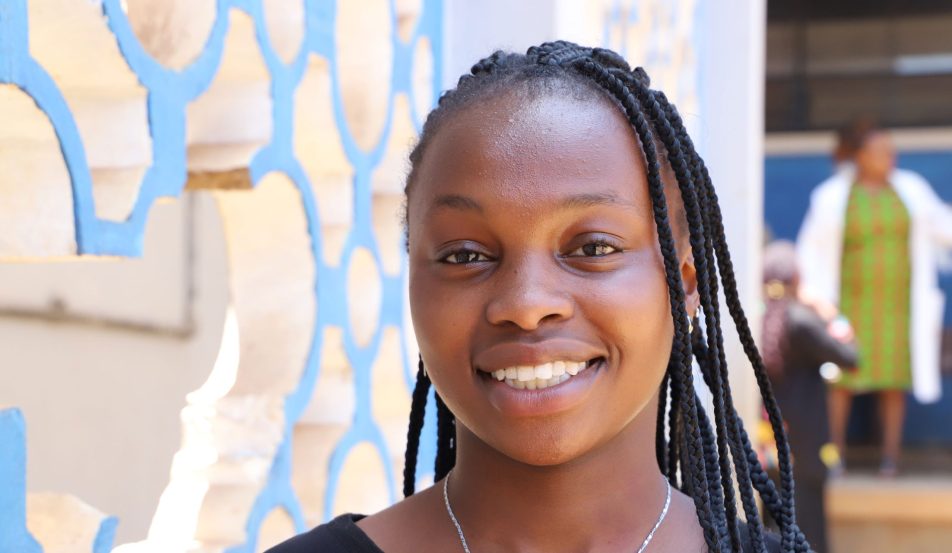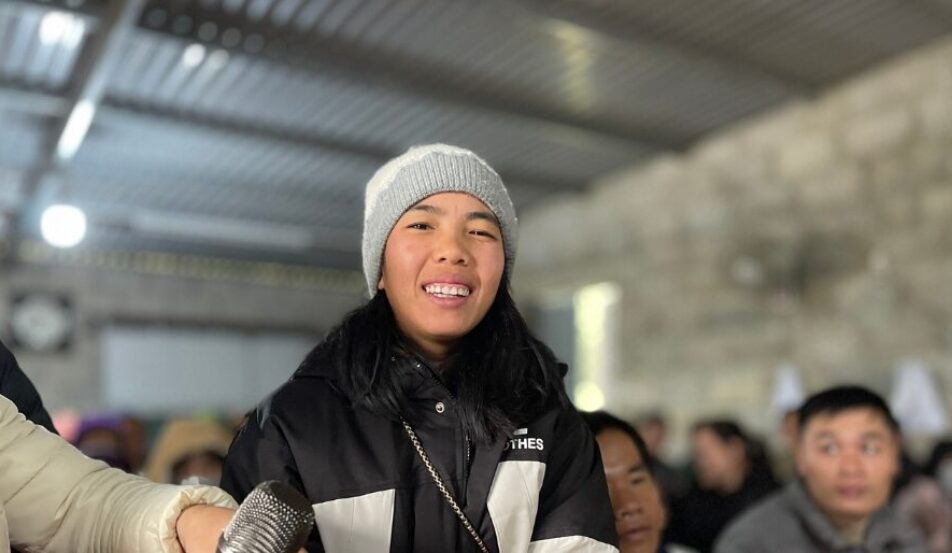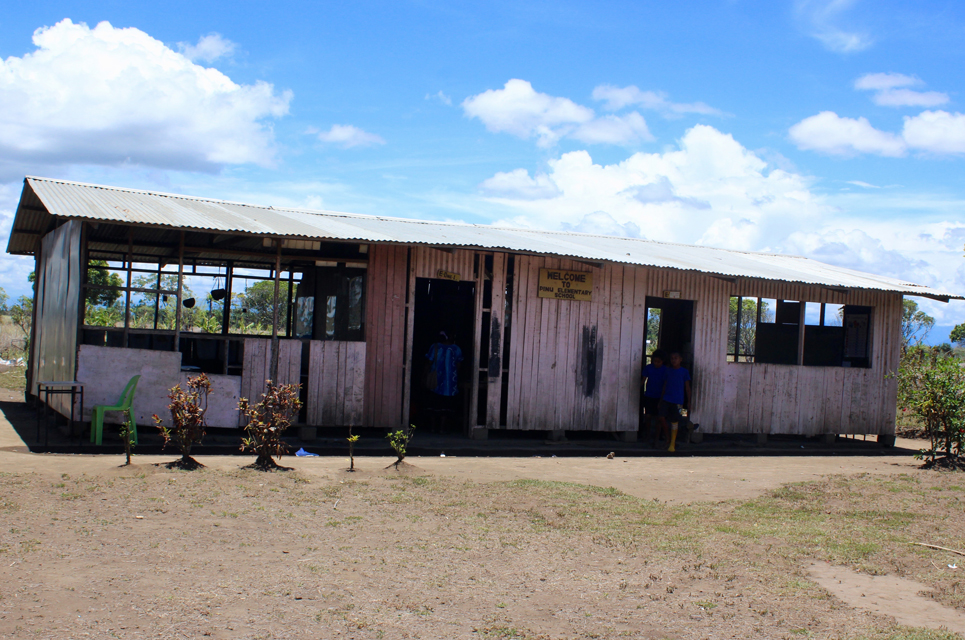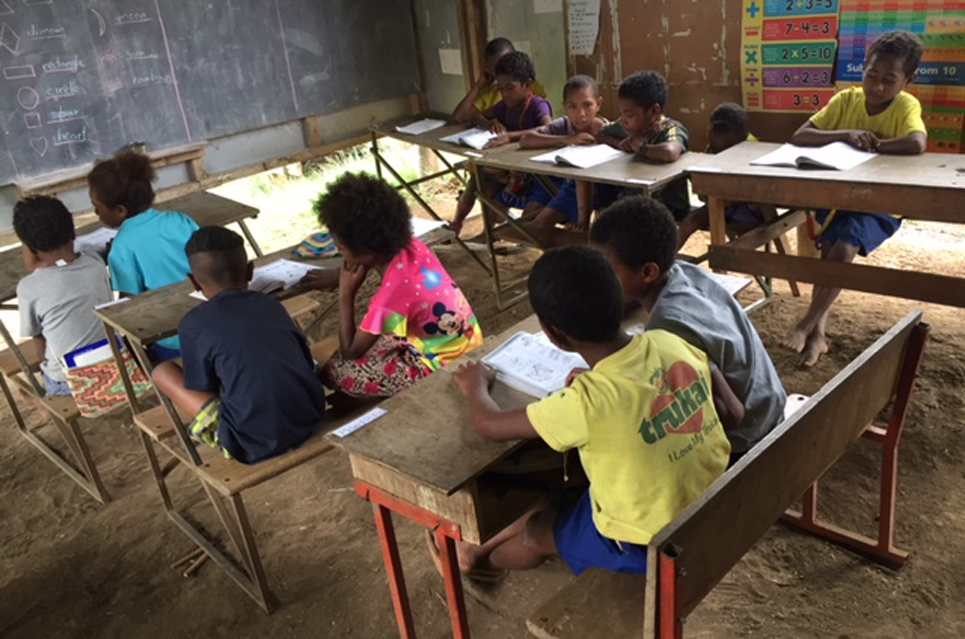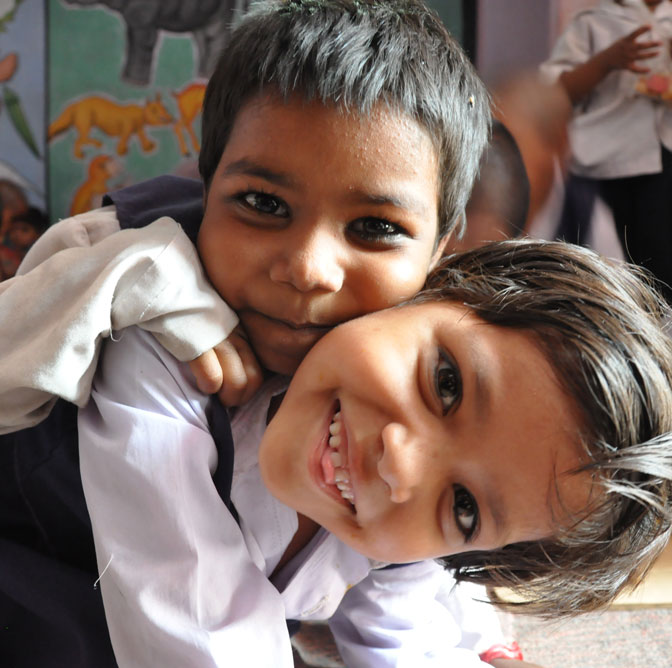We’re off to market
We’re off to market to buy some fresh food,
I love going there, I’m in a good mood.
We fill up our bilums with corn, yams and beans,
We fill up our bilums with fruit, fish and greens.
We have to get home with our heavy load,
So we catch a bus home along the main road.
The teacher read and re-read the poem, with students repeating each line. And, with an eye on the Teacher Guide, he asked questions to test comprehension:
How does the person in the poem feel?
Are they happy or sad?
What does ‘a good mood’ mean?
What words tell you they are happy?
Why did they go to the market?
What did they buy?
Did they walk home?
How do you know?
Next he turned to ‘Reading and comprehension’. The class opened their Student Activity Books, Elementary 1 Book B. He reviewed yesterday’s reading and then focussed on the next page, about plants.
Before reading, Mr Oa asked questions to prepare the students for reading:
What can you see in the first picture?
What does a plant need to help it grow?
Having discussed the pictures, the class read the sentences together. They read in small groups. They read individually. Children took turns. I stood and watched as a student slowly read the line:
“We eat the plants from our garden.”
Not the most arresting sentence in literature, but those words on that page had meaning and relevance for that child. That child in that remote village was getting meaning from print. He was learning to read using a Bilum Books Student Book, supplied by ChildFund.
His teacher conducted the lesson with confidence using the structure and sequence in the Bilum Books Teacher Guide. He followed up by teaching Phonics and Common Words, exactly as directed in the Teacher Guide, followed by some writing.
I thought ‘Wow! It’s working. The books are working. Children here in this village in Papua New Guinea are learning to read. And they’re learning to read using Bilum Books’!
Vanuamai in Central Province is a world away from the ordered streets of Kensington, Adelaide, South Australia – but there is a connection. Five years ago, Irene Sawczak, my wife Sara White and myself set up Bilum Books. Our vision was to produce resources that would enable teachers in PNG to teach their children to read and write.
I first visited PNG in 1976. In the intervening years I had worked on many educational publishing projects in the country – but charting a different course, a new independent course, as a 3-person team, was the most frustrating and rewarding publishing venture we had ever embarked on.
We set out to work more closely with local teachers and education officers in the country, to use local illustrators, to store our books in a warehouse in PNG (not offshore), to recognise more acutely that PNG is a country with 800 different languages and, at best, English is language number three – and to provide teacher training.
Literacy levels in PNG are very low, about 64%. The country has no hope of dragging itself up to join the countries classified in the UN Human Development Index as ‘developed’ unless it addresses the low levels of literacy in its schools.
Topographically and economically, Papua New Guinea is a daunting country in which to deliver services of any kind, especially in Health and Education. But there is one specific problem that can be addressed by offering teachers specific training and the right resources to give a structure and a sequence to their teaching, and graded reading and skills practice to their children.
The development of Bilum Books SBC English for Papua New Guinea has taken five intense and exhausting years. Countless trips around Papua New Guinea in search of illustrators, writers and reviewers who fully understand a PNG classroom and grasp the principles of learning English as a second (or third) language.
I stood in that classroom. I could not speak. I almost wept. I had one thought: ‘If children here in Vanuamai can learn to read and write, why can’t every child in the country?’ They can – if we address the specific problem.
I am deeply grateful to ChildFund PNG for selecting Bilum Books. Riding in the back of the 4WD with the dedicated trainers from ChildFund, reflecting on a day seeing Bilum Books in the hands of a committed teacher, watching him teach his children to read – the five-year journey seemed nothing at all.
As a community sponsor, you can make a huge impact by tackling the root causes of child poverty and helping communities become self-sufficient. Sponsor a community in Papua New Guinea today.




